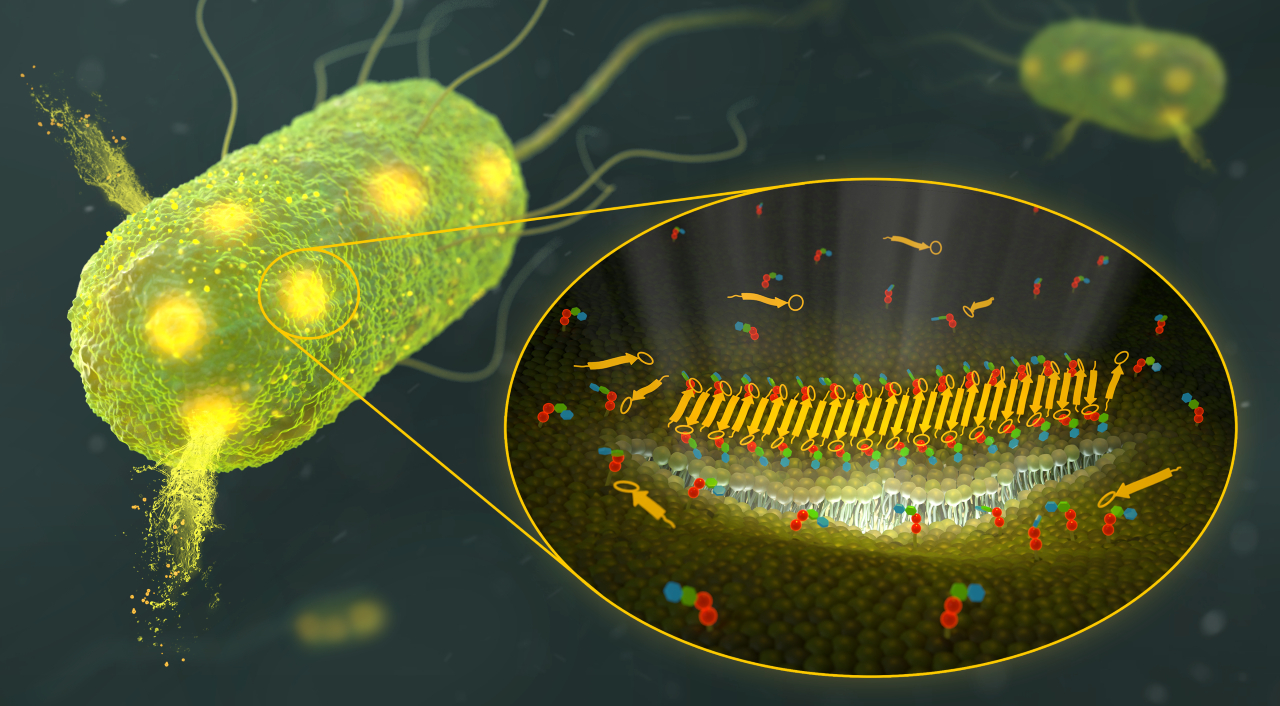The Weingarth lab discovers new ways ‘young’ antibiotics kill bacteria

Image: Long fibrils of teixobactin (yellow arrows) and lipid II (red-blue dots) lead to weak spots in the cell membrane of the bacterium. Image: Barth van Rossum.
The Weingarth lab at Utrecht University discovered a new mechanism of how antibiotics kill bacteria. The antibiotic teixobactin uses a dual molecular strategy: it blocks the bacterial cell wall synthesis and destructs the cell membrane, the researchers write in the scientific journal Nature. The new insights could enable the design of powerful antibiotics against which bacteria do not readily develop resistance.
“Bacteria need a special lipid called lipid II to build their protective envelope around them. We show at atomic level that teixobactin targets and sequesters lipid II. Afterwards, teixobactin and lipid II together form long fibrils on bacterial cell membranes,” says Markus Weingarth. “Gradually, this creates a kind of valley in the landscape of the cell membrane, which then breaks down and damages the membrane.” The Utrecht researchers turned out to have found a biomolecular mechanism that was unknown to science until now. “It is a unique killing strategy.”
Publication:
Teixobactin kills bacteria by a two-pronged attack on the cell envelope
Rhythm Shukla, Francesca Lavore, Sourav Maity, Maik G.N.Derks, Chelsea R. Jones, Bram J.A. Vermeulen, Adéla Melcrová, Michael A. Morris, Lea Marie Becker, Xiaoqi Wang, Raj Kumar, Joâo Medeiros-Silva, Roy A.M. Van Beekveld, Alexandre M.J.J. Bonvin, Joseph Lorent, Moreno Lelli, James Nowick, Harold D. MacGillavry, Aaron J. Peoples, Amy L. Spoering, Losee L. Ling, Dallas E. Hughes, Wouter H. Roos, Eefjan Breukink, Kim Lewis, and Markus Weingarth
Nature, 3 August 2022, doi: 10.1038/s41586-022-05019-y
